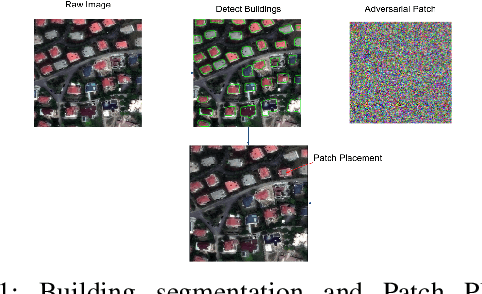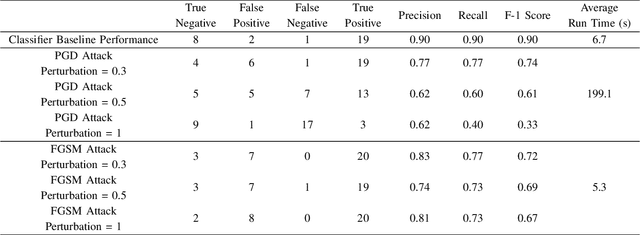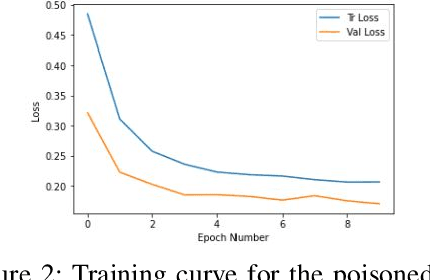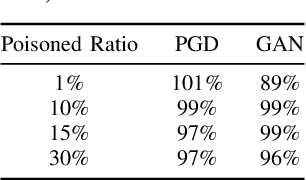Michael Lanier
Attacks on Node Attributes in Graph Neural Networks
Feb 19, 2024



Abstract:Graphs are commonly used to model complex networks prevalent in modern social media and literacy applications. Our research investigates the vulnerability of these graphs through the application of feature based adversarial attacks, focusing on both decision-time attacks and poisoning attacks. In contrast to state-of-the-art models like Net Attack and Meta Attack, which target node attributes and graph structure, our study specifically targets node attributes. For our analysis, we utilized the text dataset Hellaswag and graph datasets Cora and CiteSeer, providing a diverse basis for evaluation. Our findings indicate that decision-time attacks using Projected Gradient Descent (PGD) are more potent compared to poisoning attacks that employ Mean Node Embeddings and Graph Contrastive Learning strategies. This provides insights for graph data security, pinpointing where graph-based models are most vulnerable and thereby informing the development of stronger defense mechanisms against such attacks.
Learning Interpretable Policies in Hindsight-Observable POMDPs through Partially Supervised Reinforcement Learning
Feb 14, 2024



Abstract:Deep reinforcement learning has demonstrated remarkable achievements across diverse domains such as video games, robotic control, autonomous driving, and drug discovery. Common methodologies in partially-observable domains largely lean on end-to-end learning from high-dimensional observations, such as images, without explicitly reasoning about true state. We suggest an alternative direction, introducing the Partially Supervised Reinforcement Learning (PSRL) framework. At the heart of PSRL is the fusion of both supervised and unsupervised learning. The approach leverages a state estimator to distill supervised semantic state information from high-dimensional observations which are often fully observable at training time. This yields more interpretable policies that compose state predictions with control. In parallel, it captures an unsupervised latent representation. These two-the semantic state and the latent state-are then fused and utilized as inputs to a policy network. This juxtaposition offers practitioners a flexible and dynamic spectrum: from emphasizing supervised state information to integrating richer, latent insights. Extensive experimental results indicate that by merging these dual representations, PSRL offers a potent balance, enhancing model interpretability while preserving, and often significantly outperforming, the performance benchmarks set by traditional methods in terms of reward and convergence speed.
Eroding Trust In Aerial Imagery: Comprehensive Analysis and Evaluation Of Adversarial Attacks In Geospatial Systems
Dec 12, 2023



Abstract:In critical operations where aerial imagery plays an essential role, the integrity and trustworthiness of data are paramount. The emergence of adversarial attacks, particularly those that exploit control over labels or employ physically feasible trojans, threatens to erode that trust, making the analysis and mitigation of these attacks a matter of urgency. We demonstrate how adversarial attacks can degrade confidence in geospatial systems, specifically focusing on scenarios where the attacker's control over labels is restricted and the use of realistic threat vectors. Proposing and evaluating several innovative attack methodologies, including those tailored to overhead images, we empirically show their threat to remote sensing systems using high-quality SpaceNet datasets. Our experimentation reflects the unique challenges posed by aerial imagery, and these preliminary results not only reveal the potential risks but also highlight the non-trivial nature of the problem compared to recent works.
A Visual Active Search Framework for Geospatial Exploration
Nov 28, 2022Abstract:Many problems can be viewed as forms of geospatial search aided by aerial imagery, with examples ranging from detecting poaching activity to human trafficking. We model this class of problems in a visual active search (VAS) framework, which takes as input an image of a broad area, and aims to identify as many examples of a target object as possible. It does this through a limited sequence of queries, each of which verifies whether an example is present in a given region. We propose a reinforcement learning approach for VAS that leverages a collection of fully annotated search tasks as training data to learn a search policy, and combines features of the input image with a natural representation of active search state. Additionally, we propose domain adaptation techniques to improve the policy at decision time when training data is not fully reflective of the test-time distribution of VAS tasks. Through extensive experiments on several satellite imagery datasets, we show that the proposed approach significantly outperforms several strong baselines. Code and data will be made public.
 Add to Chrome
Add to Chrome Add to Firefox
Add to Firefox Add to Edge
Add to Edge